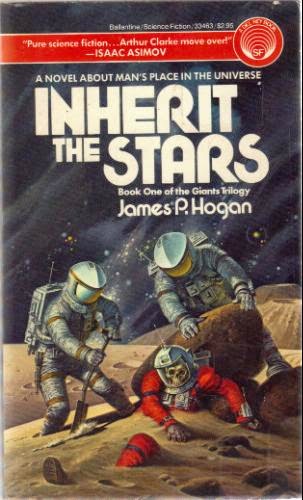So, we’re officially in the Christmas season now. And the marketing people at Crown—who are truly wonderful folks—have dropped certain… hints my way. Sooooooo, much as I dislike doing this here…
I have to ask you all to buy stuff.
I’m so very sorry. I’ll be quick.
Here’s a few of my books and also some collections and anthologies I’ve got stories in. Put them on your holiday wish list or get them as gifts for friends and family members.
And really, go to your local bookstore. They’re cool and they could use the business. Plus, now you’re not one of those conformists falling for all this Cyber Monday capitalist nonsense.
And really, go to your local bookstore. They’re cool and they could use the business. Plus, now you’re not one of those conformists falling for all this Cyber Monday capitalist nonsense.
Anyway…
The big thing this year, of course, is Paradox Bound, available in hardcover at all your favorite bookstores. Also in ebook and a wonderful audiobook read by Ray Porter. If you haven’t heard me drone on about it yet, it’s got history travel, road trips, creepy bad guys, and a really cool train. F.Paul Wilson compared it to Doctor Who crossed with National Treasure, and I really couldn’t ask for a better description than that.
The big thing this year, of course, is Paradox Bound, available in hardcover at all your favorite bookstores. Also in ebook and a wonderful audiobook read by Ray Porter. If you haven’t heard me drone on about it yet, it’s got history travel, road trips, creepy bad guys, and a really cool train. F.Paul Wilson compared it to Doctor Who crossed with National Treasure, and I really couldn’t ask for a better description than that.
I also had a short story collection come out this year—Dead Men Can’t Complain. It’s a bunch of stories from various anthologies and journals, plus a few original ones. This one’s an Audible exclusive, and it’s read by Ray Porter and Ralph Lister.
Many of you are probably here because of the Ex-Heroes series. Ex-Heroes, Ex-Patriots, Ex-Communication, Ex-Purgatory, and Ex-Isle! All of these are available in a number of formats and a number of languages.
Early on someone described The Fold as a horror-suspense novel disguised as a sci-fi-mystery, and I’ve been using that ever since. It’s also loosely connected to another semi-popular book I wrote… Ray reads the audiobook for this one, too.
Many of you are probably here because of the Ex-Heroes series. Ex-Heroes, Ex-Patriots, Ex-Communication, Ex-Purgatory, and Ex-Isle! All of these are available in a number of formats and a number of languages.
Early on someone described The Fold as a horror-suspense novel disguised as a sci-fi-mystery, and I’ve been using that ever since. It’s also loosely connected to another semi-popular book I wrote… Ray reads the audiobook for this one, too.
At least a third of you have probably found your way here because of –14— my weird Lovecraftian-sci-fi-urban-horror-mystery novel. There’s a paperback (although it’s ridiculously hard to find these days), an ebook, and another audiobook narrated by Ray Porter.
You can pick up The Junkie Quatrain as either an ebook or an audiobook (no paper, sorry). It’s my attempt at a “fast zombies” tale, a series of interconnected stories I’ve sometimes described as Rashomonmeets 28 Days Later.
You can pick up The Junkie Quatrain as either an ebook or an audiobook (no paper, sorry). It’s my attempt at a “fast zombies” tale, a series of interconnected stories I’ve sometimes described as Rashomonmeets 28 Days Later.
I also have a ton of short stories out in anthologies right now. The newest one is MECH: Age of Steel, which features “Projekt: Maria,” a new WWII pulp adventure featuring Carter & Kraft from me (and stories by more talented writers like Jason Hough and M. L. Brennan). Plus, you can still pick up Kaiju Rising, which contains “Banner of the Bent Cross,” the first Carter & Kraft team-up
Naughty or Niceis a collection of twisted holiday stories which cover… a lot of genres. Don’t get it for your nine year old. Or probably your parents.
Naughty or Niceis a collection of twisted holiday stories which cover… a lot of genres. Don’t get it for your nine year old. Or probably your parents.
There’s also The X-Files: Trust No One, edited by the wonderful-in-so-many-ways Jonathan Maberry and with stories from Gini Koch, Tim Lebbon, Heather Graham, and more. My story here is “The Beast of Little Hill,” a classic Mulder and Scully tale about roadside attractions and fake aliens.
Finally, there’s “The Apocrypha of Gamma-202, ” a story about robots and religion, which appeared in Bless Your Mechanical Heart. You’ll also get some great stories from Seanan McGuire, Ken Scholes, and Lucy Snyder.
Finally, there’s “The Apocrypha of Gamma-202, ” a story about robots and religion, which appeared in Bless Your Mechanical Heart. You’ll also get some great stories from Seanan McGuire, Ken Scholes, and Lucy Snyder.
Also, I’ve said it in some other places, but if you’d like to get something autographed for the holidays, get in touch with Dark Delicacies (either by phone or online). You can place an order with them (they’ll order the book you want if they don’t have it in stock) and tell them what you’d like to have scribbled in it. I stop by the store, personalize those scribbles for you, and they ship the book(s) to you in time for your end-of-year-holiday of choice. Everyone wins.
And thus ends my shameless Cyber Monday appeal to capitalism. Again, so very sorry, but please tell the marketing folks you read it. I’ll also do another list later this week with some great books I’ve read by other, much better authors. And of course, our usual Thursday blog post about writing. And please don’t forget my Black Friday offer if you happen to be someone who needs it.
Please feel free to resume your internet shopping. Surf responsibly. Clear your browser history on a regular basis.
And don’t click on that—it isn’t really from PayPal.











